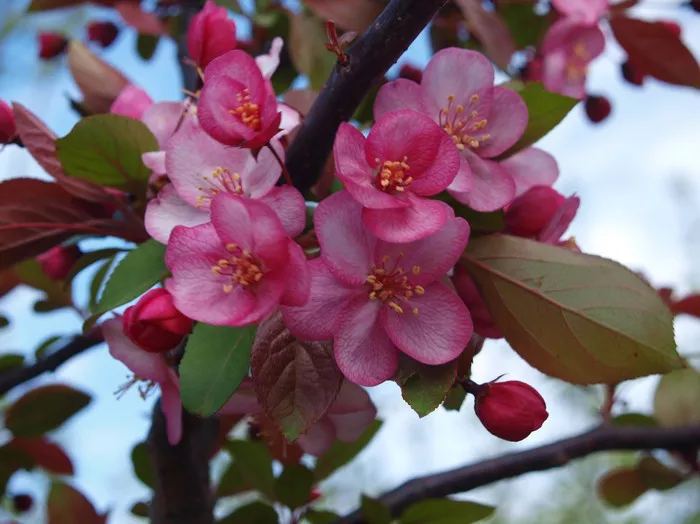Flowering crabapple trees are a stunning addition to any landscape, with their vibrant blossoms and ornamental fruit. However, for pet owners, the question of whether these trees pose a threat to their furry companions is a crucial one. Dogs, known for their curious nature, may be inclined to explore and even nibble on various plants, including trees, raising concerns about potential toxicity. In this comprehensive guide, we delve into the question: are flowering crabapple trees poisonous to dogs?
Understanding Flowering Crabapple Trees
Before delving into their potential toxicity, it’s essential to understand flowering crabapple trees themselves. These trees, belonging to the Malus genus, are popular for their showy flowers, which burst into bloom in spring, creating a spectacular display of color. Additionally, many cultivars produce small, apple-like fruits that persist well into winter, providing visual interest even after the flowers have faded.
Potential Toxicity of Flowering Crabapple Trees
While the blossoms and fruits of flowering crabapple trees are not generally considered toxic to humans, the same cannot be said for our canine companions. Several components of the tree, including the seeds, stems, leaves, and sometimes the unripe fruits, contain substances that can be harmful to dogs if ingested in sufficient quantities.
Toxic Compounds in Flowering Crabapple Trees
The toxicity of flowering crabapple trees to dogs can be attributed to several compounds, including cyanogenic glycosides and amygdalin. These compounds, present in varying concentrations throughout the tree, release cyanide when metabolized. Cyanide is a potent toxin that interferes with cellular respiration, leading to a cascade of harmful effects in the body.
Symptoms of Poisoning in Dogs
If a dog ingests parts of a flowering crabapple tree containing toxic compounds, they may exhibit a range of symptoms indicative of cyanide poisoning. These symptoms can vary depending on the amount ingested and the size of the dog but may include:
Gastrointestinal Distress: Vomiting, diarrhea, and abdominal pain are common initial symptoms of poisoning. Dogs may show signs of discomfort and may attempt to eat grass or other plants to alleviate their symptoms.
Respiratory Distress: Cyanide interferes with oxygen uptake at the cellular level, leading to difficulty breathing, rapid breathing, or even respiratory failure in severe cases.
Neurological Symptoms: Dogs may experience confusion, weakness, tremors, seizures, or loss of consciousness as cyanide affects the central nervous system.
Cardiovascular Effects: Cyanide poisoning can also impact the heart, leading to irregular heart rhythms, increased heart rate, or even cardiac arrest in extreme cases.
Treatment for Cyanide Poisoning
If you suspect that your dog has ingested parts of a flowering crabapple tree and is showing symptoms of cyanide poisoning, it is crucial to seek veterinary attention immediately. Time is of the essence in cases of poisoning, and prompt treatment can greatly improve the chances of a positive outcome.
At the veterinary clinic, the veterinarian may administer supportive care to stabilize your dog’s condition. This may include intravenous fluids to prevent dehydration, medications to control vomiting and seizures, and oxygen therapy to support respiratory function. In severe cases, antidotes such as hydroxocobalamin or sodium thiosulfate may be administered to counteract the effects of cyanide.
Preventing Poisoning Incidents
The best way to protect your dog from potential poisoning by flowering crabapple trees is through prevention. Here are some tips to minimize the risk:
Supervision: Keep a close eye on your dog when they are outdoors, especially in areas where flowering crabapple trees are present. Discourage them from chewing on or ingesting any parts of the tree.
Training: Teach your dog basic commands such as “leave it” or “drop it” to prevent them from investigating or consuming potentially harmful substances.
Fencing: If possible, consider fencing off areas of your yard where flowering crabapple trees are growing to restrict your dog’s access to them.
Substitute Plants: If you’re concerned about the safety of flowering crabapple trees, consider planting alternative dog-safe trees or shrubs in your garden.
Regular Maintenance: Keep flowering crabapple trees well-pruned to remove any low-hanging branches or fallen fruit that may tempt your dog.
Conclusion
While the vibrant blossoms and decorative fruits of flowering crabapple trees add beauty to any landscape, pet owners should be aware of the potential risks they pose to their furry companions. The presence of cyanogenic glycosides in various parts of the tree means that ingestion can lead to cyanide poisoning in dogs, resulting in a range of serious symptoms. By understanding the potential toxicity of flowering crabapple trees and taking proactive measures to prevent poisoning incidents, pet owners can ensure the safety and well-being of their canine companions. If you suspect that your dog has ingested parts of a flowering crabapple tree and is showing symptoms of poisoning, seek veterinary attention immediately for prompt treatment and intervention.


